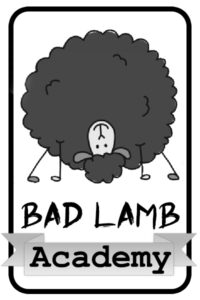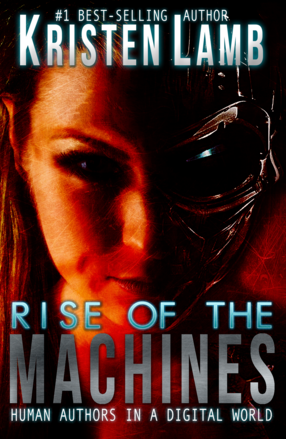In the past several posts we have been unpacking the “flashback.” But, over the course of us talking about flashbacks and how to deliver backstory, a lot of people have asked about dream sequences. Before we continue, I will say this again “Anything can be done.” Writing rules are always being broken but to break them well we need to know why they exist in the first place.
Thus, today we are going to talk about dream sequences and why they don’t work and look at instances where the do (which are rare, btw).
Dream Sequences to Hook
Often new writers will begin with some cool fantastical scene to hook the reader then POOF! The character wakes up and “Ha, ha. It wasn’t real. It was a dream.” This backfires for a number of reasons. First of all, our first five pages are some of our most critical. They are the best selling tool we have for an agent, an editor and even a potential reader.
Think about your own book-buying adventures. When we browse a book store, what do we do? We read the first page or two to make a choice. If the first five pages don’t entice us, most likely we will move on.
As an editor for years, the first five pages are also a pretty good litmus for the overall writing. It’s like a cardiologist doesn’t need to crack open your chest to see if you have a bum ticker. Often the blood pressure, pale skin, sweats and dizziness are more than telling enough.
Same with the first five pages. I don’t need to read the entire book to tell every bad habit. I usually need five pages and almost never need over twenty.
Trick at Our Own Risk
This said, dream sequences that “trick” the reader will usually tick them off. Our job as authors is to manipulate the audience, but the audience should never “feel” manipulated. We have to be subtle.
Since the first five pages are telling about the rest of the work, if a writer has tricked me in the beginning, I realize that I can’t trust anything else that follows. Since I don’t trust, it can prevent me from being submerged into the fictive dream.
Reminds me of my dad trying to teach me to swim. He had a sadistic sense of humor and found dunking me when I didn’t know how to swim funny. Problem was, I needed to be able to trust so I could relax enough to learn. Since he dunked me the first time and left me choking for air? Fool me once shame on you. Fool me twice, shame on me.
Aaaand that is why MOM ended up teaching me to swim.
We have to be very careful about breaking the reader’s trust if we hope to submerge them in our world.
Dream Disorientation
Also, dream sequences are very jarring. The reader is in one place and one setting with one group of people. Just about the time the reader is oriented (hooked), POOF! The scene, setting, etc. all change and the reader needs to orient all over AGAIN. Any time we shift like this and a reader has to adjust, we’ve provided a great place for a bookmark (which is bad).
Dream Double-Duty
When we hook with a dream and then shift, we then have the job of hooking again. Hooking once is already tough. Why make more work?
Dreams in Movies
Dream sequences might work well in movies, but remember we are dealing with a very different medium. Movies often will employ dream sequences because movies are at an inherent disadvantage. Movies only can use two senses; sight and sound. Movies are not only lacking three other senses, they also can’t relay what is going on inside a character’s head. This means they need to do things differently than a novel and that’s why dream sequences in a movie are more acceptable than in books.
An example would be the movie Gladiator. In Gladiator there are a couple of visually stunning scenes where Maximus dreams of his family and seeing them in the Elysian Fields. In this instance, a movie can get away with this because this feeling/sensation can’t be relayed in narrative like a novel. Additionally, since movies are visual and passive, it is clear we are in a dream so we don’t get the same disruption.
But I will add that even in screenwriting, writers are strongly discouraged from relying on dreams.
Dreams as Training Wheels
Dreams are more often than not in the same category as a “training wheel flashback.” It is a ham-fisted way of dumping backstory. Or, it is deus ex machina intervening to bail the writer out of a major plot problem.
The protagonist is in a real spot but then she has a DREAM and POOF! the answer appears.
Remember that the protagonist must do the hard work. The protagonist begins with a “normal.” This “normal” is then shattered with the inciting incident that introduces the story problem and shifts the protagonist’s world out of balance. The entire plot is the protagonist working to restore a “new normal” but the protagonist must do the heavy lifting.
Thus dreams that passively supply answers count as cheating more often than not.
Killing Our Page-Turning Tension
Remember when we talked about backstory and how telling too much could actually ruin tension and conflict because it makes the reader comfortable? The same thing can also happen with dream sequences.
Readers turn pages because they crave answers. Tension creates momentum.
And the thing about dreams is that if we (the readers) know this is a true dream, we aren’t worried for the protagonist because we know dreams aren’t real. If it is only a dream, there are no consequences. Dreams are by definition passive. Passivity kills story tension.
Kills it. Dead.
Now that we have talked about all the reasons dreams can go sideways, we will discuss how they might be used well.
Dreams as a Device
Often in paranormal stories we are dealing with someone who might have psychic abilities. Yes, dreams can be used, but make sure the dreams are generating more questions than answers and are propelling the plot forward. In this instance, dreams become part of the story.
For instance a psychic who has a dream of a murdered girl and the dream is what puts her eventually into the investigation. But in this case, the dream is a literary device, not a prop.
In this case the dream should be used sparingly. No convenient dreams to give clues or offer clear direction. That’s cheating.
Dreams as Plot
In The Cell the entire story involves a therapist traveling into the dreams of a serial killer using advanced technology that can put her into that world. The dreams are part of the story and there is no story without the dream world.
In the beginning we get these fantastical scenes when social worker Catherine Deane is in the dreams of traumatized children. Eventually she enters the dream world of deranged killer Carl Stargher to locate a girl he abducted before he fell into a coma. The goal is to hunt for clues in the dream world to help the FBI find the girl in the real world before the victim dies.
Yet, I will say that from Act II on, this would not be a dream sequence because the actual STORY is taking place in the mind of the killer.
If I were to recreate such a story in a novel, I would not italicize but I might add a chapter heading that denotes real world from dream world and then structure accordingly. The reason this can work in a novel (and a story) is that there are life and death consequences for Deane in this dream world. If she falls too deeply into this twisted reality, fear can kill her.
Anyone else thinking about Freddy right now? And we wonder why every kid of the 80s suffered insomnia O_o .
Dreams to Propel Plot
The movie Cake with Jennifer Aniston did a pretty good job of using dreams (and there is a tad of a spoiler so you were warned). Aniston plays Claire Bennett, a woman who is suffering from severe chronic pain. The movie opens with Claire in a support group for those who suffer chronic pain and they are trying to cope with the suicide of a fellow member of the group.
It is clear from the beginning that Claire is very bitter and extremely angry. She doesn’t handle death well at ALL.
[youtube https://www.youtube.com/watch?v=P3IsUOSHlnU&w=560&h=315]
Then she dreams of Nina Collins, the woman who committed suicide and left her husband and young son behind.
Nina actually serves as another character who propels Claire along the plot and character arc. Claire has never grieved her son who was killed in the accident that has left her crippled. Claire has pushed away everyone she loves and numbs the pain with drugs. She is a woman trapped. She is too angry and frightened to move forward which means she is neither living or dying.
Nina (dream/hallucination) doesn’t conveniently supply answers, but she does shove Claire out of her comfort zone. Claire is propelled to understand why she is dreaming/hallucinating about a woman she barely knew and the answer is that Nina is a manifestation of her own internal desire to end her own life. Nina challenges her to make a choice and get out of limbo.
Live or die.
But, if she is going to choose life, it will be painful emotionally (grieving her son, letting go of guilt, repairing her wrecked marriage) and physically (painful rehabilitation and drug withdrawal).
There is nothing “convenient” about Dream Nina and there is no story without her.
Delivering Dreams
First of all, if you do have a dream sequence, make it clear it is a dream. Often dream sequences will be clearly sectioned off and in italics. Also, work to keep them SHORT.
If the dream world is part of a setting, make sure there are consequences. If I am just going through some harrowing adventure and I know the characters aren’t actually in any real danger? Snoozefest.
In the end, make sure the dreams are necessary because they are risky. Yes, we can envision these fantastical worlds because we built them. For someone who isn’t creating this dream world, it could just be jarring and confusing. Make sure the dream isn’t there to simply supply backstory and convenient plot clues. Make the characters work.
What are your thoughts? Can you think of books that used dream sequences well? I really couldn’t which was why I used movies. Most of the dream sequences I’ve seen that used dreams either were Eh writing or if the dream worked it was because it was another world with real consequences and thus not what I would call a “dream sequence” (since it is simply a shift in setting and bad things CAN happen).
Announcements:
Before we go, my log-line class will be Wednesday Your Story in a Sentence—Crafting Your Log-Line . This class will include me gutting your log-line in class (or via e-mail if you’re shy) to make it agent ready. We should be able to tell others what our story is about in one sentence or odds are we have a big problem. Class is recorded and the recording and shredding are included.
Also, due to popular demand, I am rerunning my Hooking the Reader—Your First Five Pages at the end of the month and I am doing something different. Gold Level includes me looking (and shredding your first five) but I have added in some higher levels and will look at up to 20 pages. This can be really useful if you’re stuck. I can help you diagnose the problems. It’s also a great deal if you have to submit to an agent and want to make your work the best it can be.
June’s Winner Christine Ardigo. Please submit your 5000 words via a WORD docx attachment to kristen at wana intl dot com and CONGRATULATIONS!
I LOVE hearing from you!
To prove it and show my love, for the month of JULY, everyone who leaves a comment I will put your name in a hat. If you comment and link back to my blog on your blog, you get your name in the hat twice. What do you win? The unvarnished truth from yours truly. I will pick a winner once a month and it will be a critique of the first 20 pages of your novel, or your query letter, or your synopsis (5 pages or less).
For those who need help building a platform and keeping it SIMPLE, pick up a copy of my latest social media/branding book Rise of the Machines—Human Authors in a Digital World on AMAZON, iBooks, or Nook.










24 comments
3 pings
Skip to comment form
I used a dream to show why my protagonist was hiding from the hero in a book I wrote a few years ago. I still can’t figure a way to share that info in a way that has as much impact as the dream, which is probably one of the reasons the story never made it past the first draft.
I enjoy your posts!
Laurie Logan
Again, good post, Kristen. I’m afraid I was “guilty” of this same problem when I banged out my very first WIP, except that it was a hallucination of my dying character.
Food for thought, as always. You weren’t kidding about Freddy Krueger either. Movie gave me nightmares for a long time.
“Can you think of books that used dream sequences well?” I hope so, but my readers would have to answer that question. I sometimes use short dream sequences as a way to show a character’s state of mind with the intensifying effect of striking imagery.
“Woman on the Edge of Time” by Marge Piercy was amazing for what may or may not have been a dream sequence.
The most awful dream sequence of all: the dream that serves no purpose other then to allow the author the opportunity to describe fantastical imagery that possesses little or no connection to the story. I’ve read a few, but can’t summon titles. Who’d want to remember? 🙂
AMERICAN GODS by Neil Gaiman is a good example of dreams working well. At least they didn’t detract from the story for me. Overall, I tend to agree about skimming long dream sequences, especially when they’re just weird versions of what happened in the characters’ lives (actually, the weirder the dream, the less I like it). But I think Harry Potter is a pretty solid exception to this, where she used his dreams as a link to Voldemort to show what the bad guys were up to. They can also indicate, as they did in Harry Potter, that two characters share a unique, magical connection. I could see that working in a paranormal.
In general, I think dreams can work when they show the reader what another character is doing, particularly in 3rd person limited story, as long as it stays within the context of your story.
Like prologues and back story, dream sequences are easy to abuse. The “poetry-dump”–wicked clever–is just one of those forms of abuse. I once tried to read a book that opened with a very long dream, pages and pages of world building in exotic, archaic prose that waxed poetic. It was a long three scene chapter of ONE dream. Then the lady, an artist, woke up and painted a two dimensional picture inspired by the dream. It had nothing to do with the romantic plot. (Unless I missed something symbolic.) It seemed as if the author was attempting to showcase her writing talents. Had to put it down at the third chapter. I HATE the “it was all just a dream”, and the dream should have a point or introduce or maybe hint at something the character already knows but isn’t ready to accept.
The nightmare of Catherine at the window at the beginning of Wuthering Heights works really well – a mystery, a haunting that sets up the rest of the novel.
I’m with you on everything you’ve had to say here.
Yeah, I’m guilty of using the dream crutch.
Hey Kristen, thanks for another very useful post. I have used a short dream sequence in the early stages of my WIP. I have used it however in a way that hasn’t yet been mentioned. So if it works I will let you know! 🙂 thanks again. Mark
Fab post, Kristen. Although I must confess, I love a good dream scene. I’ve lost count of how many versions of A Midsummer Night’s Dream I’ve watched, but it always makes me smile. 🙂
Yikes. I have two dream sequences in my WIP. Great info Kristen. My WIP is a time-travel YA, so I thought I’d be clever by letting my protagonist have a futuristic dream. Oh well.
This is a very important blog post to me right now. Thank you for sharing it Kristen.
I’ve got a dream in my WIP – the MC dreams of something dreadful happening to a loved one she left behind and wakes up screaming that she has to go back, never mind that there are armed men hunting her down in the darkness. It’s just a dream, not a prophecy or anything, but it serves to get the character into more trouble for being too impulsive.
But now I think about it, it might work just as well having her lying awake with those insidious 3am thoughts getting a greater and greater grip on her. Except for the absence of screaming. Screaming is good 🙂
Thank you for your generous writing and sharing such a rich perspective fuelled by intelligent experienced writing! Namaste’
Glad I did one more thing right. My self-pub novel ‘Pindlebryth’ uses dreams (which are more accurately described as visions), but only at the end of select chapters, and only to inform the protagonists of good/bad news, a warning, or an impending challenge. Can use this info to move forward with Pindlebryth II.
One of my WiPs depends heavily on (interactive) dreams, so I was hungrily devouring this post to see what you had to say on the subject! 🙂 I think for me, dreams should fall into one of two categories: Either not there except something like, “she had dreamt of her old hamster the previous night” or otherwise as important to the plot as non-dreams. Thank you for another great blog post! 🙂
I wondered if you would apply this guidance also to spiritual visions/ premonitions which are the main focus of my book? How can I differentiate these from the rest of the story to highlight the profoundness of them? Any guidance is greatly appreciated x
I have 2 dreams in my WIP that force the MC to take a path away from what she sees in the dream. Sure hope it works.
I just finished YA Everybody Sees the Ants by A.S. King with an intriguing dream weave throughout the book. Love to know how you like it.
My editor referred to my writing as come back’s. The patagonist tries to desperately remember what happened to her the night before after a party. She woke up in a precarious situation and has no idea why this happened to her. Her flashes in time confirms her actions, which I kept limited, but they are brief. The reader is aware there just cloudy memories. I try not to rely on them, if I have to clarify the past, I try to use dialog or I incorporate the senses. I enjoy reading your posts, I’ve learned a lot of valuable information and refer back to them as much as I can.
I read a book once that ended with the main character waking up from a coma and the entire fantastical adventure had been a dream. Perhaps it could have worked to show character growth or some such but he had been able to communicate with his family back home and when he woke up he learned none of it had ever happened. I threw the book across the room and donated the book to a rummage sale – 20 years later I still feel rage when thinking of that book!
Reblogged this on Barrow Blogs: .
I feel dreams are indicators of what is coming in our lives…
I can only drive so far without my eyes crossing, I’ve yet to discover why this is. Reading does this to me also. As few as 7 boring or confusing pages, nearly force me to sleep. I have internally, been putting up with the idea that I am a poor and slow reader, because I just can’t take the strain of reading anything longer than a short-story.. though I try again one day, only to find myself dragging boxes of published works, from place to place. Each with a marker to show where I gave up/passed out. What prompted this share was I being reminded how many times I tried to read Huxley “island”
[…] ways your stakes could be too low and how to fix them. One way to mess up your stakes is with an ill-placed or ill-conceived dream sequence, as Kristen Lamb […]
[…] When Dreams Go Bad—Dream Sequences, What Works & What Flops […]
[…] When Dreams Go Bad—Dream Sequences, What Works & What Flops […]